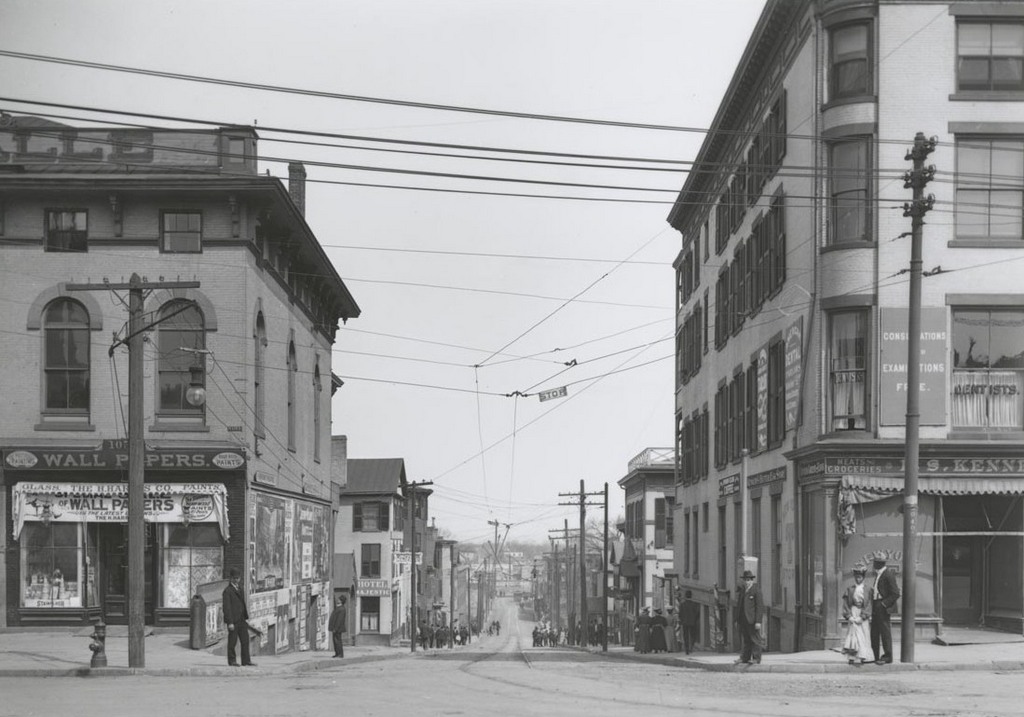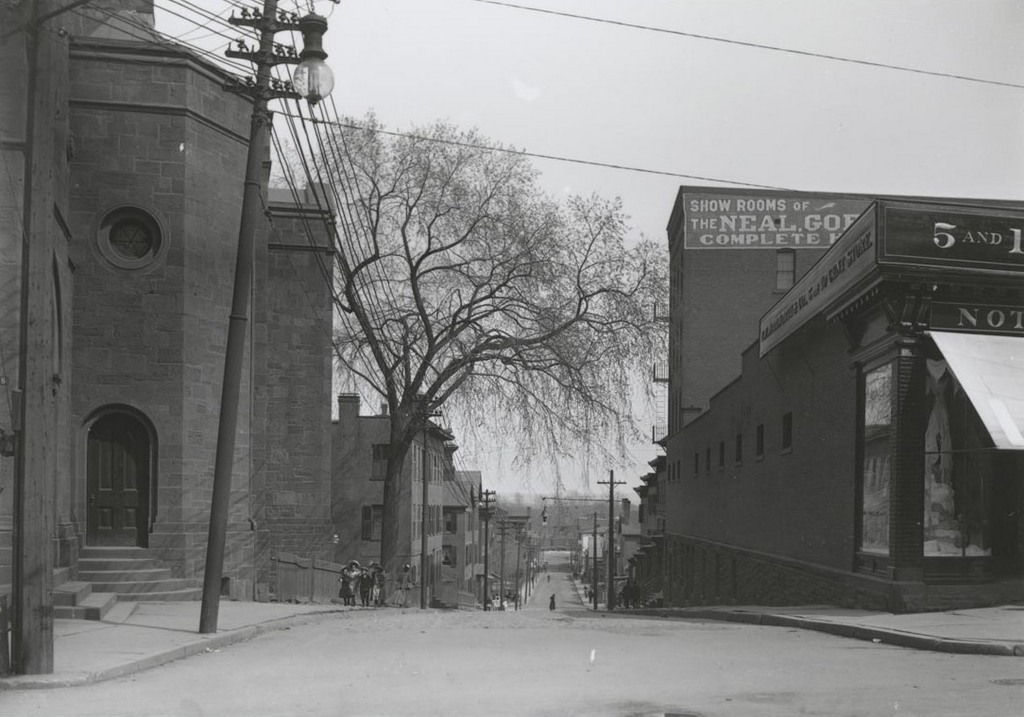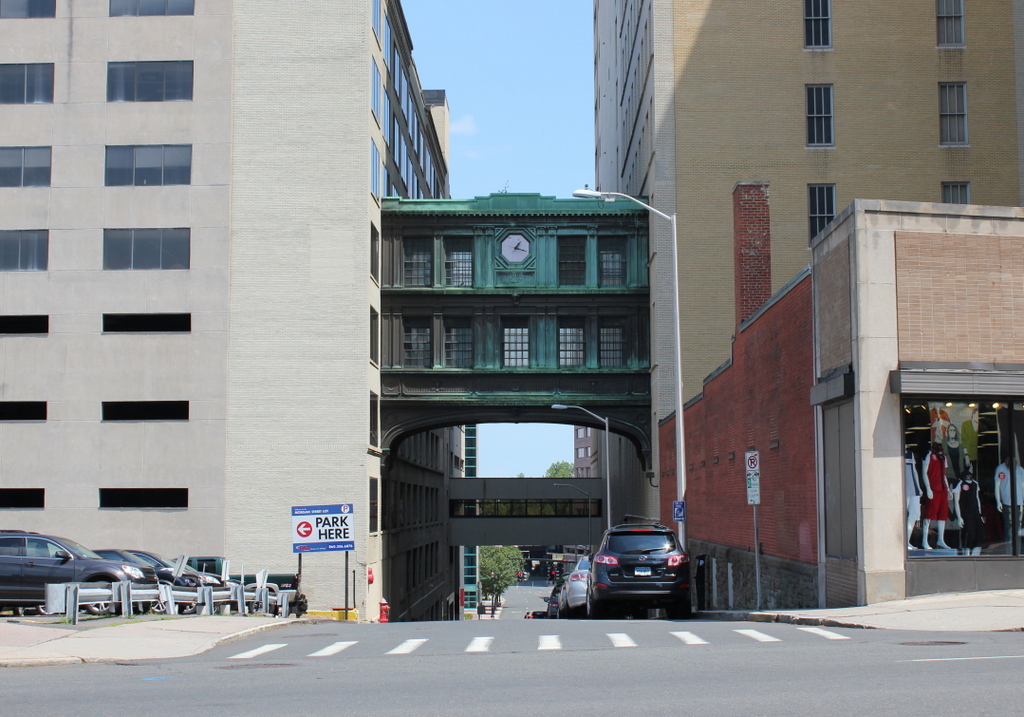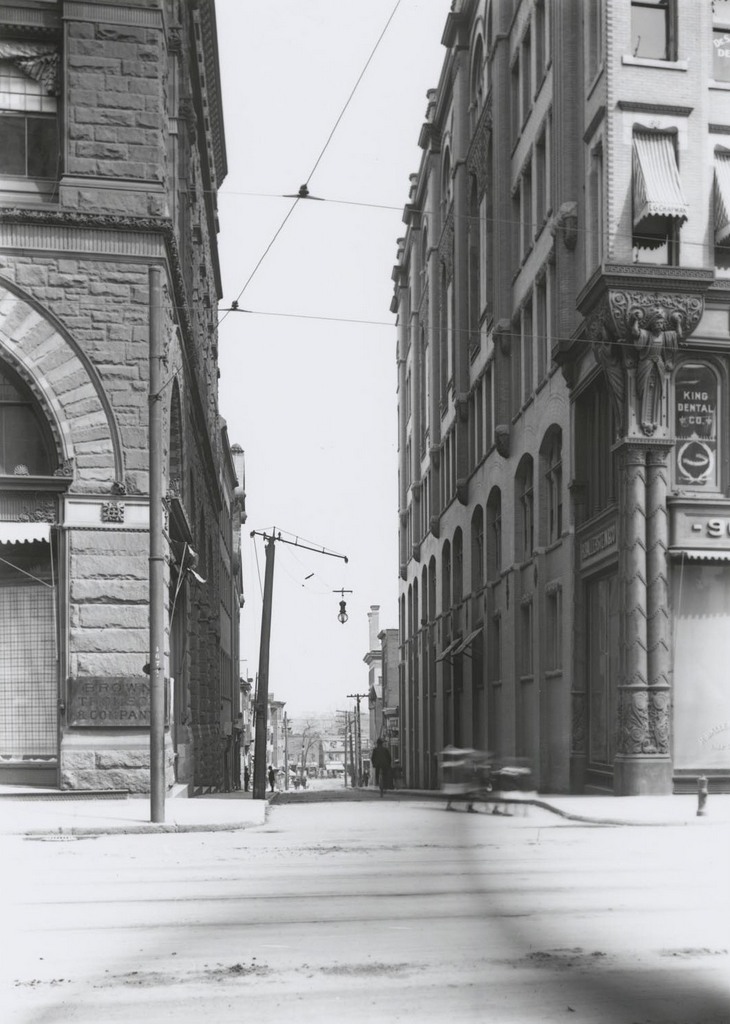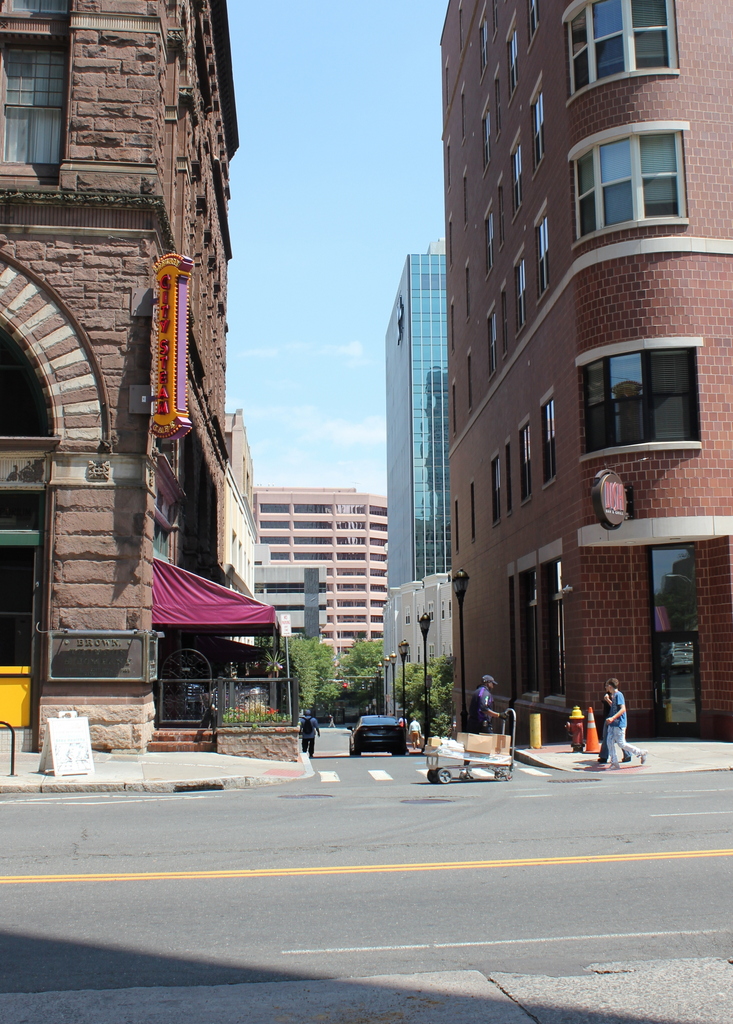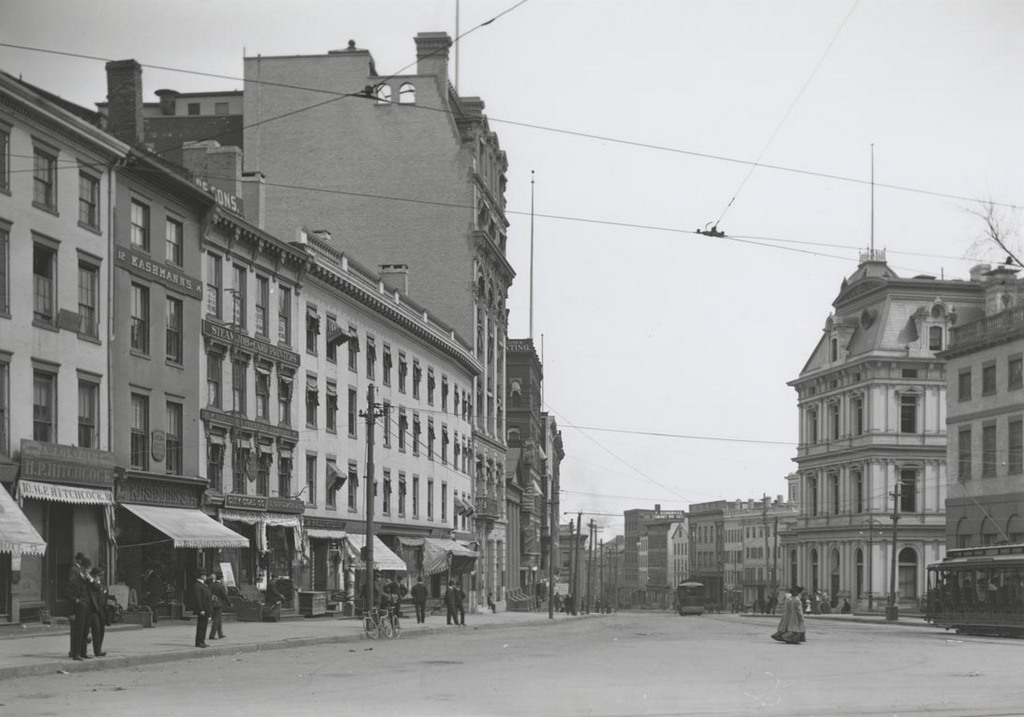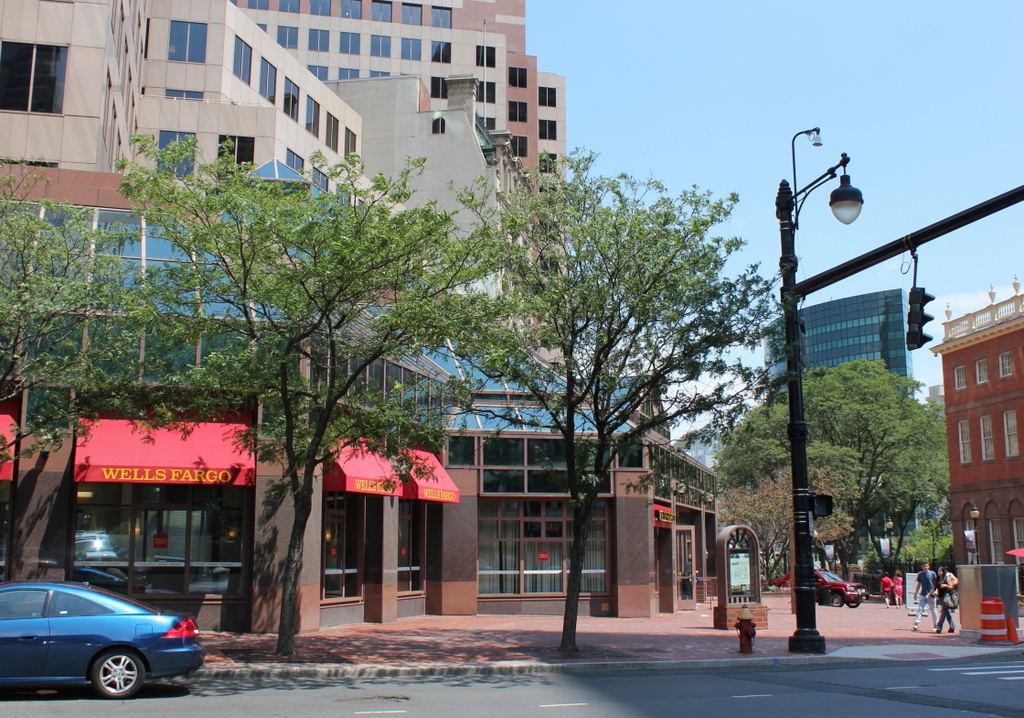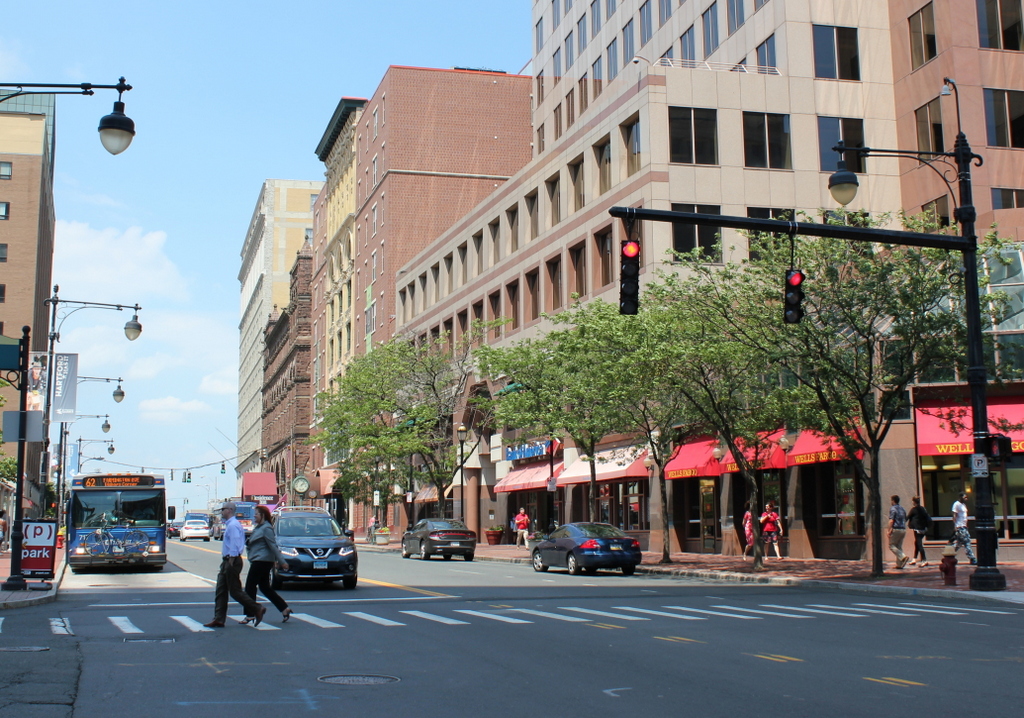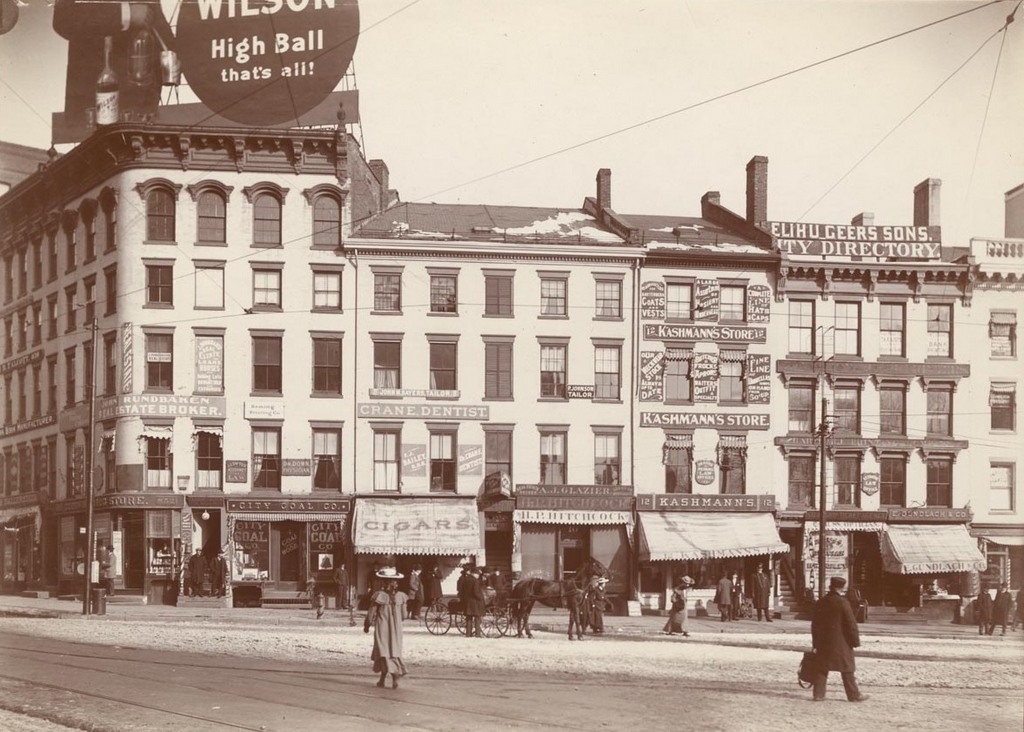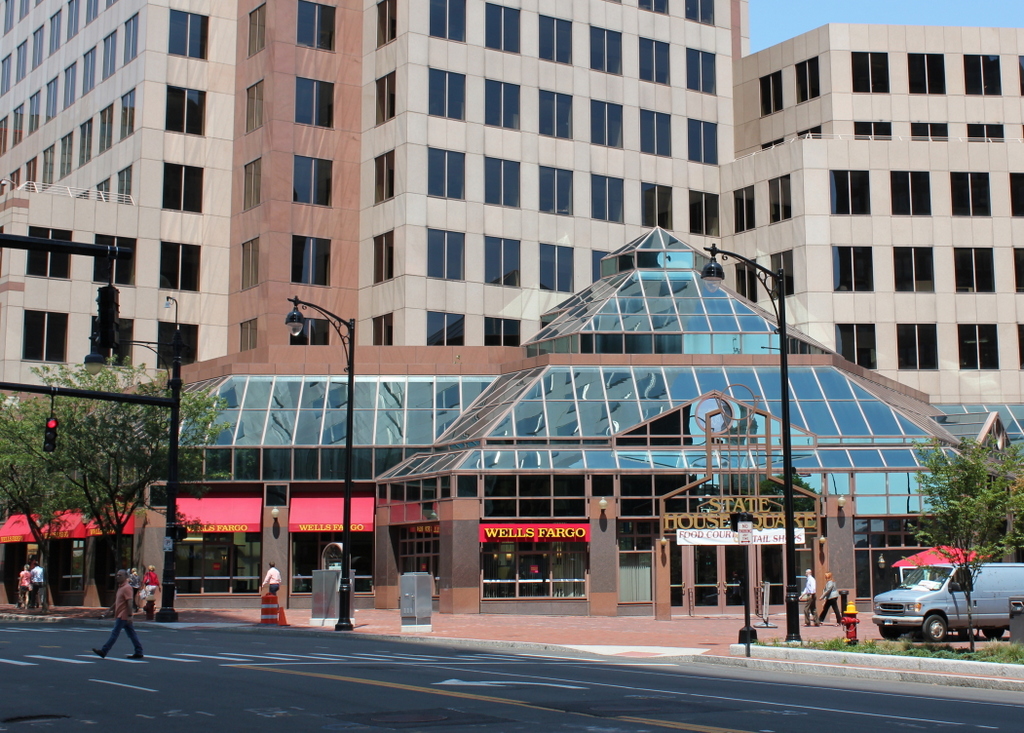Looking east on Morgan Street from Main Street, on April 22, 1906. Image courtesy of the Connecticut State Library.
Morgan Street in 2016:
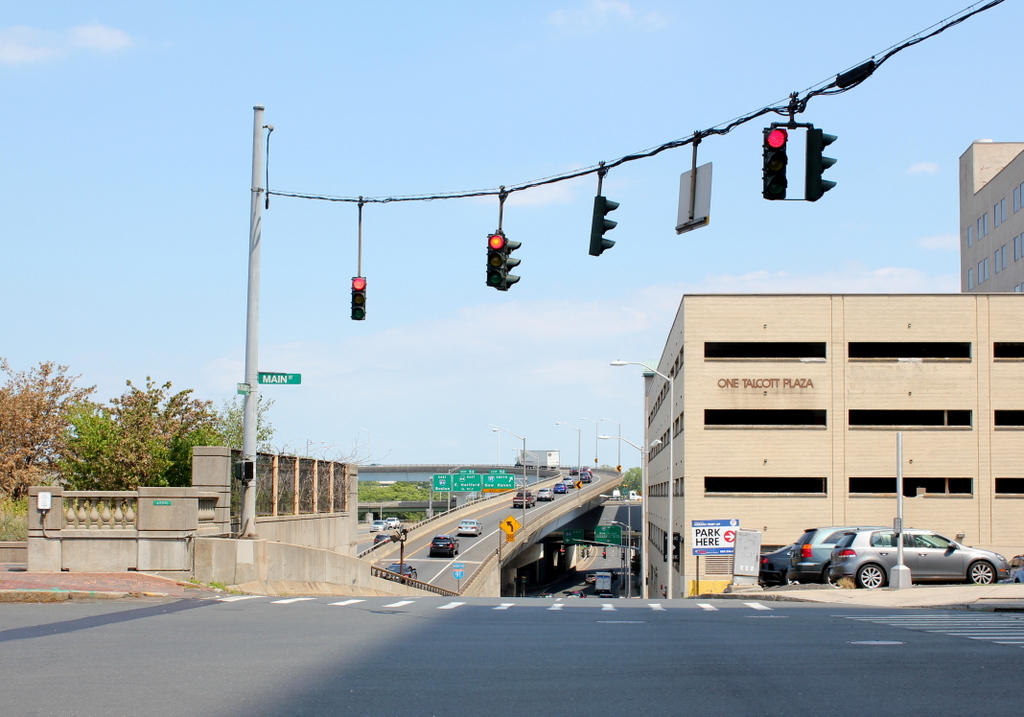
These photos show the same scene as the ones in this earlier post, just from the opposite direction, facing down the hill toward Market Street. When the first photo was taken, this section of Main Street was somewhat on the northern edge of the downtown area, as shown by the signs here in the storefronts. Instead of the prominent department stores, banks, and insurance companies a few block south of here, this area had businesses like a wallpaper store and a grocery store.
Over a century later, this spot has become an even more stark dividing line between the downtown central business district and the northern part of the city, with Interstate 84 now passing through the left side of the scene, and the interchange with Interstate 91 in the distance. On the right side of the photo is a parking garage, which was once part of the G. Fox department store complex here. Like most of the other photos that William H. Thompson took in the early 20th century, there are no buildings left from the first photo, although the Bulkeley Bridge, which was under construction in the distance at the time, is still standing at the eastern end of Morgan Street.

